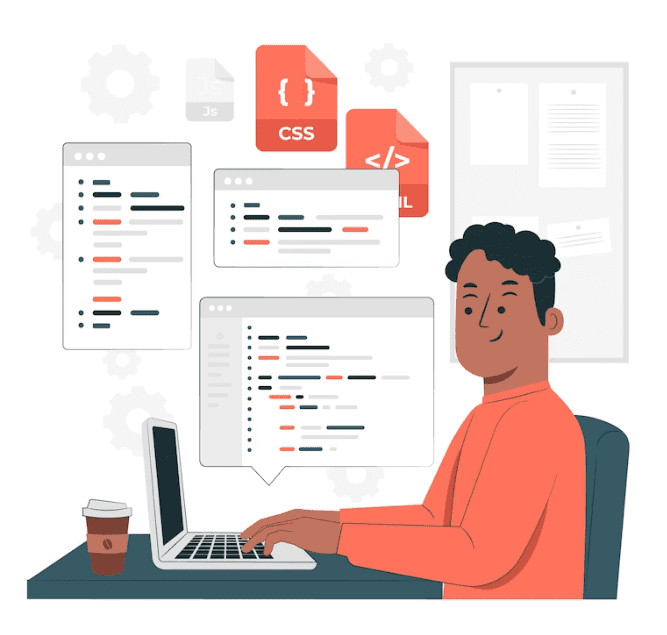The Top 7 UI Test Automation Best Practices

Regardless of how advanced your product is, its value diminishes if it doesn't provide an excellent user experience. Since a poor user interface (UI) can negatively impact your business, ensuring your app or website delivers the highest level of user satisfaction is key. This elevates the significance of automated UI testing.
As the focus on user experience grows, UI test automation offers an excellent way for testers to test the UI accuracy and consistency. It helps them validate the UI by easily simulating real-world functionality, maximizing test coverage, and checking for integration issues along the way.
These automated UI testing tips will enable you to score high on a gamut of critical metrics, including response time, request rate, and more. When done right, they will enable you to boost customer loyalty and retention.

1. Conduct Behavior-Driven Testing
Testing scenarios should be specific when it comes to validating the UI of your application or website. They should be based on user behavior and built according to how users will use the product.
As you build test scenarios, be clear on what to test, what not to test, and what the expected results should be. Instead of simply testing software functionality, aim to test actual user behavior and build scenarios in an understandable language.
During behavior-driven testing, it's crucial to understand the user's context or situation. Next, consider the action the user is performing. And finally, analyze the outcome of the action and check its veracity against the intended result.
2. Rely on Soft Assertions
When you test the UI elements of your app, you are likely to use assertions to verify if they behave as expected. But instead of using hard assertions, which fail the test immediately if a condition is not met, it pays to rely on soft assertions.
Hard assertions help verify critical conditions. But they only allow you to catch one error before failing the test. On the other hand, soft assertions help in logging errors and issues. This way, you can verify multiple UI aspects in a single test – without worrying about the test failing prematurely.
With soft assertions, your automated UI test execution will continue even if one of your assertions fails. What's more, at the end of the test cycle, it will sum up the list of failed assertions and make you aware of all the discovered issues.
Your business guide to codeless test automation
Ready to execute continuous test automation without writing a single code?

3. Use a Combination of Manual and Automated UI Testing
Although automated UI testing delivers several benefits, a small amount of human intervention is still needed. While testing each UI element can be difficult, especially for complex applications, manually testing a website's or app's initial versions can go a long way.
Manual testing, when conducted with automated UI testing, can help enhance product quality and user experience. Via thorough visual testing, it can help check for any discrepancies. The combination is beneficial for testing features such as geolocation, slow network conditions, and checkout functionalities.
4. Go Codeless

With user behavior constantly changing, you must find a way to easily playback tests across your desktop, web, and mobile applications. Opting for codeless UI test automation is a great way to test critical aspects of your application – with little or no coding.
Codeless automated UI testing simplifies how you create tests while expanding your test coverage. In fact, using modern tools, you can:
- Detect common UI elements across your applications
- Build tests faster
- Bring new products and features to market more quickly
5. Leverage the Benefits of AI
Leveraging the benefits of AI can completely transform your approach to UI test automation. For instance, AI-powered object recognition facilitates smarter UI testing, allowing comprehensive testing across desktop, web, and mobile applications.
Similarly, AI-powered visual recognition can help you identify every UI element in your application, thus allowing you to achieve maximum test coverage. Furthermore, self-healing tests can reduce testing time and effort by automatically identifying (and resolving) unexpected errors.
Work on BIG ideas, without big work.
Simplify test automation with our Unified platform for Enterprise stack across Web, Mobile, API, Desktop & Backend

6. Streamline Browser Compatibility Testing
As users use applications on different devices, ensuring browser compatibility is vital. But this doesn't mean you must run all your tests against all available browsers. For efficient testing and quicker delivery, it's essential to perform selective tests ensuring the application's compatibility with all supported browsers.
Emphasize testing your website's basic features and functionality on different browser-OS combinations, devices, and assistive tools. Use modern codeless cross-browser testing platforms to build and execute comprehensive tests, running them simultaneously across various browsers.
7. Ensure Detailed UI Test Automation Reporting
Comprehensive UI test automation isn't just about conducting a handful of tests. You must also ensure detailed automated UI test reporting to analyze the results of your testing efforts.
In essence, UI test automation reporting is a crucial component of automation projects. Through the presentation of testing results, it helps you analyze failures and make the important decision of whether to release a product or not.
While building your UI test automation report, it is essential to document all testing activities. The report should summarize important tasks (number and type of scripts) and results (list of passed and failed tests) and act as comprehensive feedback for stakeholders. This report will allow key decision-makers to reach meaningful conclusions regarding product delivery and deployment.
Wrapping Up
Test automation allows testing teams to simulate human interaction on the application UI and perform logical validations in an automated fashion. From verifying information on the UI screen to checking the accuracy of input data and API calls, automated UI testing enables teams to interact with varying screens and query different system resources.
QA test automation offers a great way to rapidly develop and test the UI elements of your app or website. The right approach to UI tests can help validate several aspects, including user navigation, input fields, UI workflows, and more.
Embrace these UI test automation best practices today to identify inconsistencies in readability and legibility, ensure the end-user interface is running accurately, and uphold the logical functionality of your UI elements.
Balbodh Jha
Associate Director Product Engineering
Balbodh is a passionate enthusiast of Test Automation, constantly seeking opportunities to tackle real-world challenges in this field. He possesses an insatiable curiosity for engaging in discussions on testing-related topics and crafting solutions to address them. He has a wealth of experience in establishing Test Centers of Excellence (TCoE) for a diverse range of clients he has collaborated with.
Discover More
 Self-Healing Test Automation: A Comprehensive Guide
Self-Healing Test Automation: A Comprehensive Guide
Self-Healing Test Automation: A Comprehensive Guide
 Testing in the Metaverse: Paving the Way for Virtual Success
Testing in the Metaverse: Paving the Way for Virtual Success
































